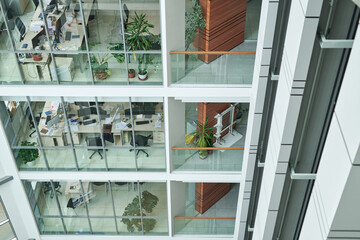Embracing Nature: The Essentials of Biophilic Design in Architecture
Biophilic design in architecture is the integration of natural elements into built spaces. It aims to enhance the connection between humans and nature.
What is Biophilic Design?
Biophilic design focuses on bringing the outdoors inside. For example, it uses elements like natural light, plants, and water features.
Key Elements of Biophilic Design
- Natural Light:
Large windows and skylights maximize exposure to natural light. - Greenery:
Indoor plants and living walls improve air quality and aesthetics. - Water Features:
Fountains and waterfalls create a calming ambiance. - Natural Materials:
Wood, stone, and natural fabrics add a tactile connection to nature. - Views of Nature:
Strategic window placements offer views of landscapes or greenery. - Natural Shapes and Forms:
Organic forms mimic the shapes found in nature.
Benefits of Biophilic Design
Incorporating biophilic elements lessens stress and boosts creativity. Thus, users report improved well-being and productivity.
Examples in Architecture
- Office Spaces:
Open layouts with indoor gardens and natural light create stimulating work environments. - Hospitals:
Healing gardens and sunlight-filled rooms speed up patient recovery times. - Homes:
Floor-to-ceiling windows and indoor plants make living spaces cozy and inviting.

How Architects Implement Biophilic Design
Architects follow several strategies to incorporate biophilic elements. For example, they prioritize natural light by designing ample windows. Additionally, they add greenery through indoor plants and green roofs.
Focusing on views of nature, architects place windows strategically. Furthermore, they use natural materials like wood and stone for a tactile connection. Lastly, they incorporate water features to bring tranquility inside.
Conclusion
In conclusion, biophilic design offers a refreshing approach to architecture. It strengthens our bond with nature, enhancing the quality of interior spaces. Therefore, embrace biophilic principles in your designs to create healthier, happier living environments.








